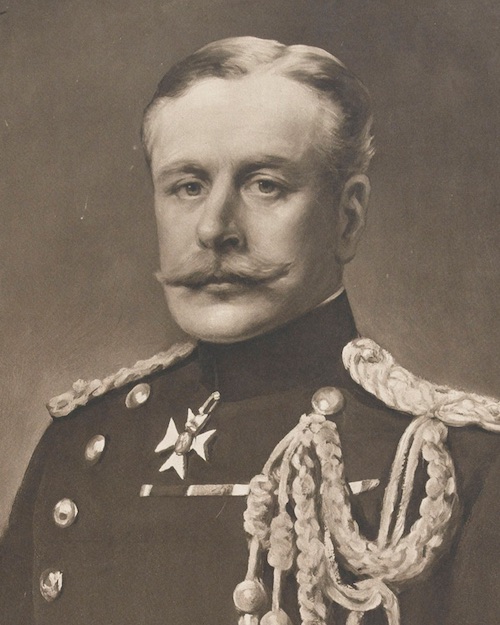People of WWI |
| The Archduke Ferdinand |
| Kaiser Wilhelm II |
| Vladimir Lenin |
| David Lloyd George |
| Georges Clemenceau |
| Eric Ludendorff |
| Sir Douglas Haig |
| Ferdinand Foch |
| Woodrow Wilson |
| John J. Pershing |

Sir Douglas Haig was a prominent British general who served as the Commander-in-Chief of the British Expeditionary Force (BEF) during World War I. Known for his leadership during the grueling trench warfare on the Western Front, Haig played a significant role in the Allied victory. In this biography, we explore the life, military career, and enduring legacy of Sir Douglas Haig.
Early Life and Military Career
Douglas Haig was born on June 19, 1861, in Edinburgh, Scotland. After attending Clifton College and Brasenose College, Oxford, Haig entered the British Army in 1885. He demonstrated his military prowess in various campaigns, including the Sudan and the Second Boer War, where he gained valuable experience in command and strategy.
Promotion and Command
Haig's abilities as a commander and staff officer earned him rapid promotions within the British Army. He held important posts, including Chief of Staff of the British forces in India and later in the War Office in London.
Command on the Western Front
In 1915, Haig assumed command of the BEF (British Expeditionary Force) on the Western Front, a critical theater of operations during World War I. He inherited a challenging situation, with the British forces locked in a stalemate against the German Army. Haig faced the complex task of coordinating the efforts of multiple Allied nations and developing strategies to break the deadlock.
The Battle of the Somme
One of the most significant and controversial episodes of Haig's military career was the Battle of the Somme in 1916. Haig believed in the efficacy of a large-scale offensive to weaken the German forces. Despite heavy casualties and initial setbacks, the battle eventually achieved limited territorial gains and put significant pressure on the Germans. However, the high cost in human lives led to criticism of Haig's tactics and decision-making.
Trench Warfare and Innovations
Haig's leadership during the trench warfare on the Western Front was characterized by a relentless determination to break through enemy lines. He pioneered new tactics, including the use of creeping barrages, tanks, and increased coordination between artillery and infantry.
Victory on the Western Front
In the later years of the war, Haig played a pivotal role in the Allied offensives that led to the German defeat. The Hundred Days Offensive in 1918, characterized by coordinated attacks and tactical flexibility, proved instrumental in pushing back the German forces and ultimately securing victory for the Allies. Haig's leadership during this crucial period highlighted his ability to adapt and achieve strategic objectives.
Later Years and Legacy
After the war, Haig retired from active service but remained involved in veteran affairs and military organizations. He was elevated to the peerage as the 1st Earl Haig in recognition of his services. However, his reputation faced significant criticism, with some labeling him as a "butcher" due to the heavy casualties suffered under his command.
Legacy and Historical Perspectives
Sir Douglas Haig's legacy is a subject of ongoing debate among historians. While some criticize his handling of battles and the high casualty rates, others recognize his role in successfully coordinating the Allied forces and ultimately achieving victory. Haig's strategic thinking, adaptability, and commitment to the war effort played a crucial role in shaping the course of World War I.